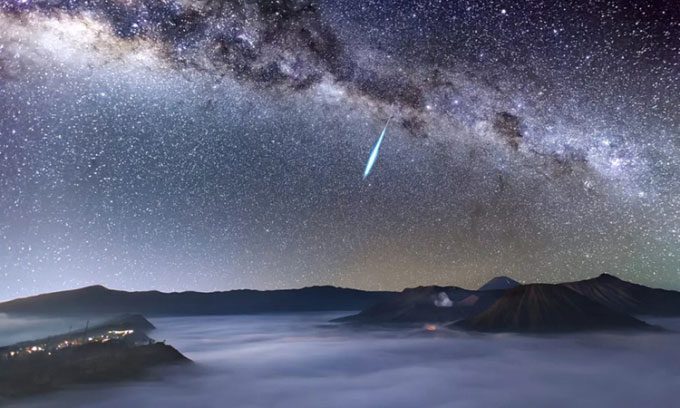Astronomy enthusiasts around the world will have the opportunity to observe the Eta Aquarids meteor shower peaking this week.
The Eta Aquarids meteor shower occurs annually from April 19 to May 28, offering a spectacular display of light that can be seen with the naked eye in the night sky. This year, the event will peak on the night of May 4 and the early morning of May 5, with about 50 bright streaks per hour, according to meteor expert Bill Cooke from NASA.

A bright Eta Aquarids meteor streak in the night sky over Java, Indonesia. (Photo: Justin Ng)
The Eta Aquarids are of average brightness, so viewers should seek a location away from city lights for the best observation experience. The moon will be in a crescent phase, shining at about 15% illumination during the meteor shower’s peak.
The Eta Aquarids originate from the debris of Halley’s Comet. Its name is derived from Eta Aquarii, the brightest star in the constellation Aquarius. This constellation is where the majority of the meteor streaks will be concentrated.
For those in the Northern Hemisphere, the meteor shower will not appear very high in the sky. Therefore, if you are in this region, you will need a dark sky with a relatively clear southern horizon to observe the streaks.
Observers in the Southern Hemisphere and along the equator will have the best views, as the constellation Aquarius is more prominent in the southern sky. Nights are also longer in the Southern Hemisphere as the June solstice approaches.
Meteor showers occur when debris from a comet enters the Earth’s atmosphere and ignites. These fragments originally share the same orbital path as the comet but gradually become misaligned due to differing speeds as well as influences from gravitational forces, radiation pressure, and interplanetary gas, Cooke explains.





















































